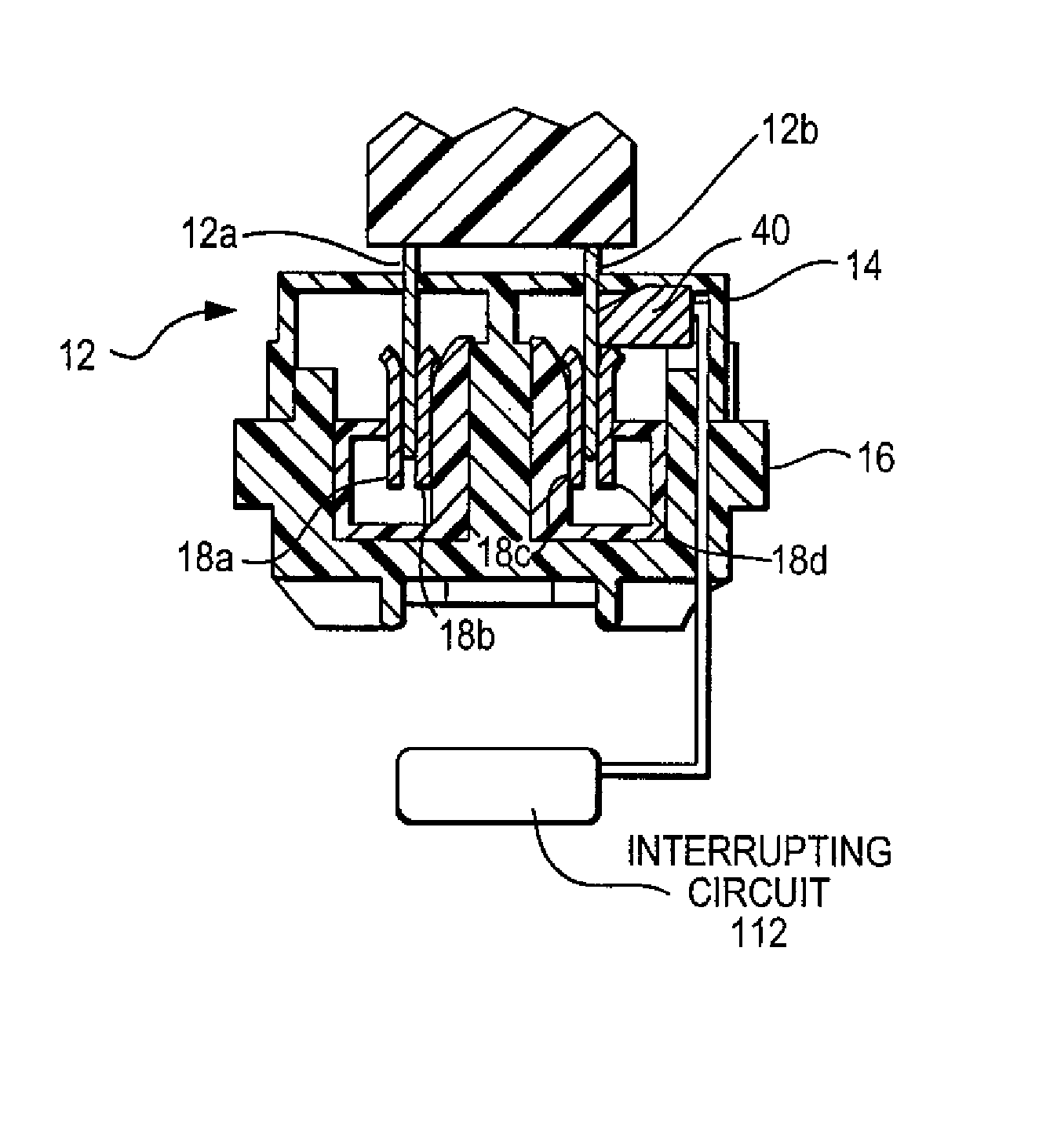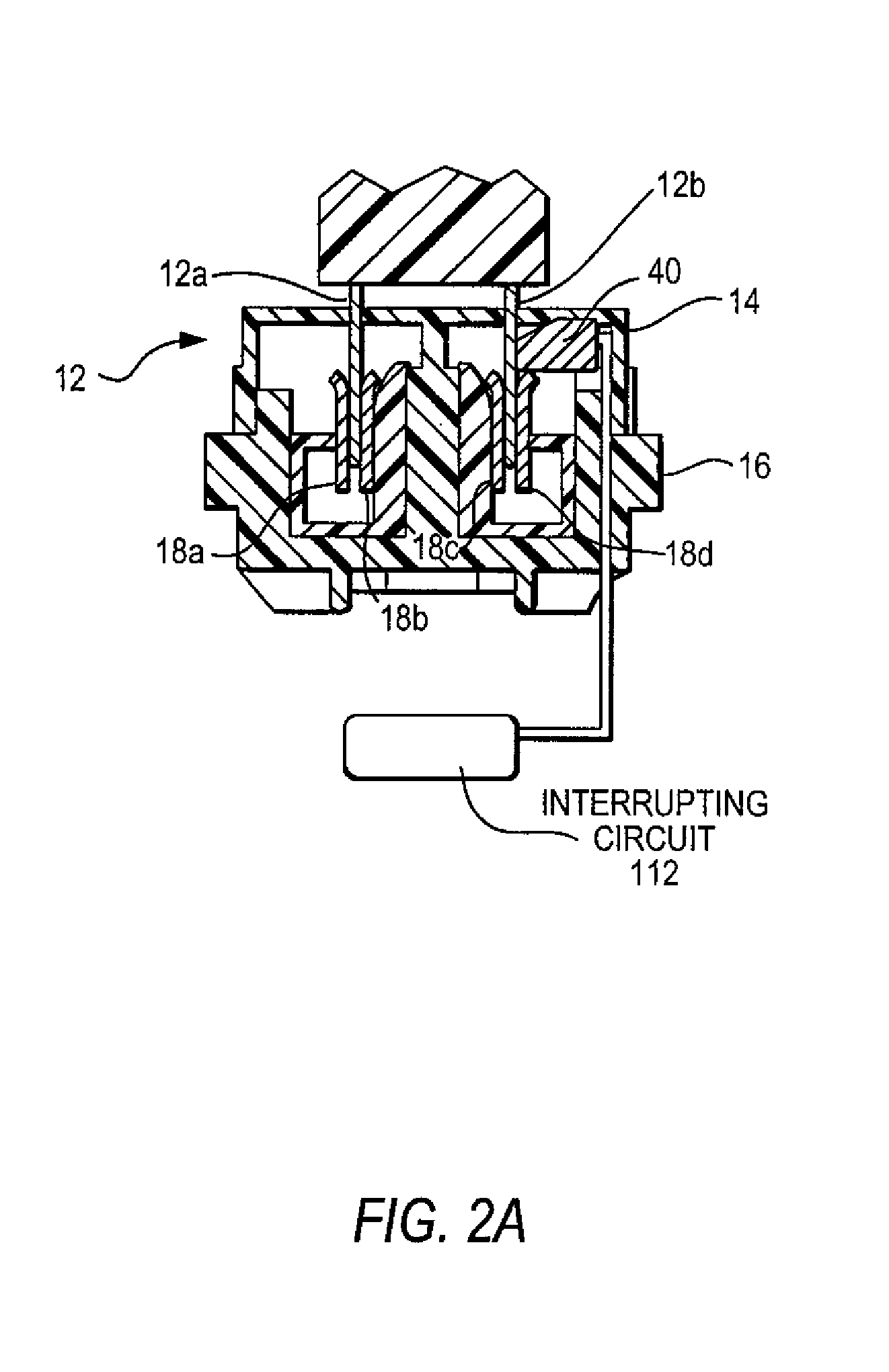Thermally protected electrical wiring device
- Summary
- Abstract
- Description
- Claims
- Application Information
AI Technical Summary
Benefits of technology
Problems solved by technology
Method used
Image
Examples
first embodiment
[0035] Referring to FIG. 2A, there is shown a cross-sectional view of FIG. 1 taken along Section line A-A of a first embodiment having one thermally sensitive element and a plug inserted in the receptacle. A thermally sensitive element 40 is located near one of the plug blade openings 20 just behind the receptacle face and is positioned to contact blade 12b of a plug located in the receptacle. The thermal sensitive element 40 can have a positive or negative temperature coefficient. In FIG. 2A, reference numerals 12a and 12b designate the blades of a plug, reference numerals 18a, 18b and 18c, 18d designate the two receptacle contacts which receive the blades of a plug and reference numeral 14,16 is the receptacle cover and base.
[0036] Each thermally sensitive element can made of an electrically conductive grade of thermally conductive plastics which exhibit either an increase or a decrease in resistance as its temperature rises. As such, when the temperature of the blades of a plug r...
second embodiment
[0038] Referring to FIG. 2B, there is shown a cross-sectional view of FIG. 1 taken along Section line A-A of a second embodiment having a pair of thermally sensitive elements 40. A plug is not show in this Fig. A thermally sensitive element 40 is located near each one of the plug blade openings 20 just behind the receptacle face and the two thermally sensitive elements 40 are positioned to contact the two blades of a plug located in the receptacle. Thermally sensitive elements 40 can have a positive or negative temperature coefficient. As with FIG. 2A, an interrupting circuit 112 is connected to the elements 40 to interrupt the flow of current through the receptacle when a high heat condition is detected by one or both of the thermally sensitive elements.
third embodiment
[0039] Referring to FIG. 3A, there is shown a cross-sectional view of FIG. 1 taken along Section line A-A of a third embodiment having one thermally sensitive element located to sense the heat of one blade receiving contact in the receptacle positioned to receive a blade of an inserted plug. The plug is not shown. The thermally sensitive element 110a is located to contact one of the blade receiving contacts 108a, 108b located in the body of the receptacle behind plug blade openings 20 and behind the receptacle face. Thermal sensitive element 110a can have either a positive or a negative temperature coefficient. As with FIG. 2A, an interrupting circuit 112 is connected to the elements 110a to interrupt the flow of current through the receptacle when a high heat condition is detected by the thermally sensitive element.
PUM
 Login to View More
Login to View More Abstract
Description
Claims
Application Information
 Login to View More
Login to View More - R&D
- Intellectual Property
- Life Sciences
- Materials
- Tech Scout
- Unparalleled Data Quality
- Higher Quality Content
- 60% Fewer Hallucinations
Browse by: Latest US Patents, China's latest patents, Technical Efficacy Thesaurus, Application Domain, Technology Topic, Popular Technical Reports.
© 2025 PatSnap. All rights reserved.Legal|Privacy policy|Modern Slavery Act Transparency Statement|Sitemap|About US| Contact US: help@patsnap.com



